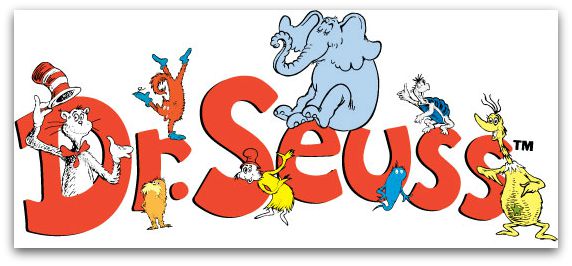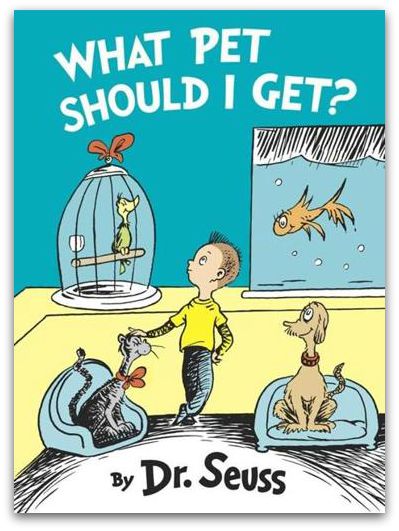We are celebrating the release of the new Dr. Seuss book, What Pet Should I Get. It’s Oh, the Places You’ll Go! gift-giving season again, so here’s a look at the former Theodor Seuss Geisel.
He adopted “Seuss” as his writing name while attending Dartmouth College. The reason: He was caught with a half-pint of gin in his room and was told to resign as editor of the college humor magazine as punishment. Instead, he just stopped using Geisel as his byline. Years later, he added “Dr.” to his name “to sound more scientific.”
- He was working as an artist for an advertising agency in New York in 1936 when he wrote To Think That I Saw It on Mulberry Street. It was turned down by 27 publishers. Vanguard Press finally picked it up in 1937, and it was an immediate success. So he quit the ad agency and began writing kids’ books full-time.
- He wrote 48 books, selling more than 100 million copies in 20 languages. (Including four of the bestselling hardcover children’s books of all time: The Cat in the Hat, Green Eggs and Ham, Hop on Pop, and One Fish, Two Fish, Red Fish, Blue Fish.)
- In 1984 he won the Pulitzer Prize for his contribution to children’s literature.
- Bennett Cerf, the founder and publisher of Random House, bet Seuss $50 that he couldn’t write a book using just 50 words. Seuss won the bet. “It’s the only book I ever wrote that still makes me laugh,” he said 25 years later. He added: “Bennett never paid!” The book: Green Eggs and Ham.
- Dr. Seuss’s favorite book is, he said, “about people who raise hell in the environment and leave nothing behind.” He wrote The Lorax on a laundry list as he sat at a hotel pool in Kenya, watching a herd of elephants with his wife. “I wrote it as a piece of propaganda and disguised the fact,” he told a reporter. “I wasn’t afraid of preaching—but I was afraid of being dull.”
- In 1954 Life magazine published excerpts of a report that analyzed how reading was taught in the Connecticut school system. In it, novelist John Hersey wrote that one of the major obstacles to learning was the dull material students were given—especially the illustrations. Kids, he said, should be inspired with “drawings like the wonderfully imaginative genius, Dr. Seuss.” A textbook publisher read the article and agreed. He contacted Dr. Seuss and asked him to create a reading book. The publisher sent Seuss a list of 400 words he could use in the book. The reason: People felt this was the maximum that “kids could absorb at one time.” “Geisel went through the list once, twice and got nowhere,” reports Parents magazine. “He decided to give it one more shot; if he could find two words that rhymed, they’d form the title and theme of the book. Within moments, cat and hat leaped off the page.” It still took him nine months to write The Cat in the Hat.
Read more in Uncle John’s Bathroom Reader For Kids Only.









